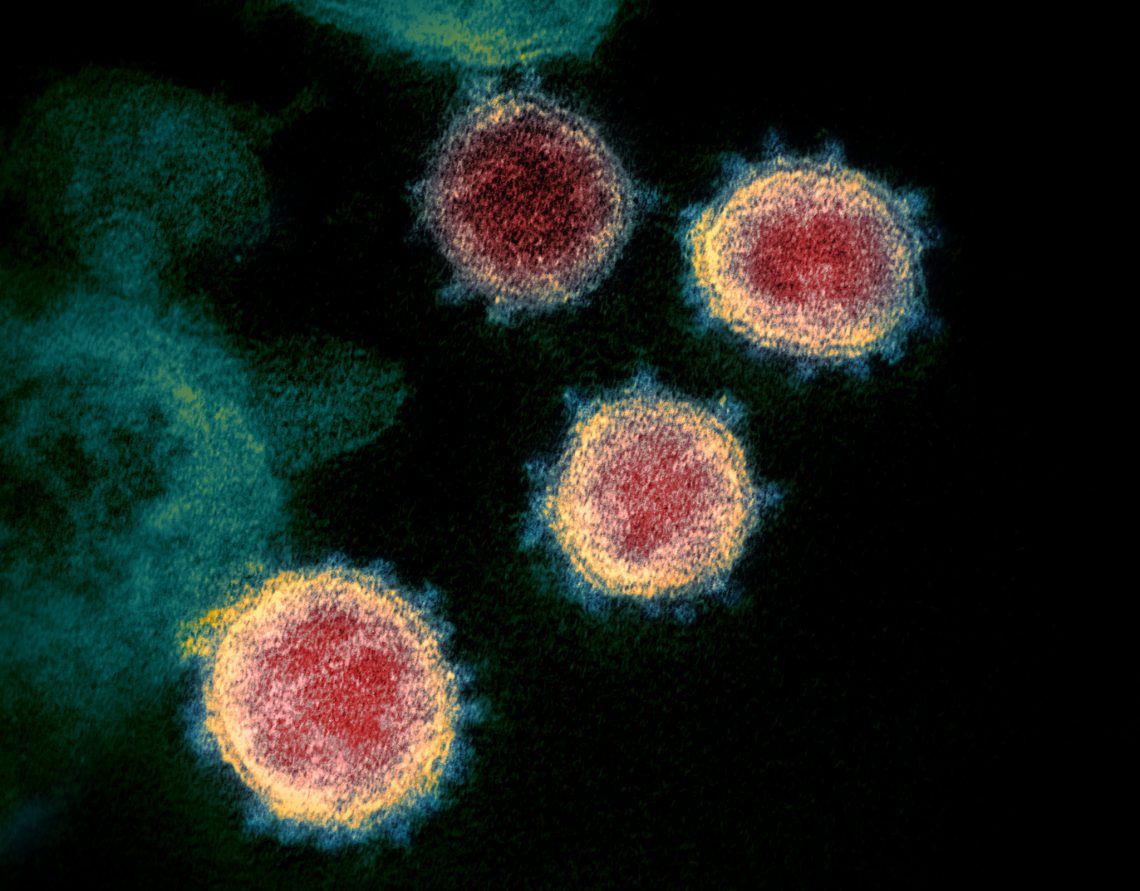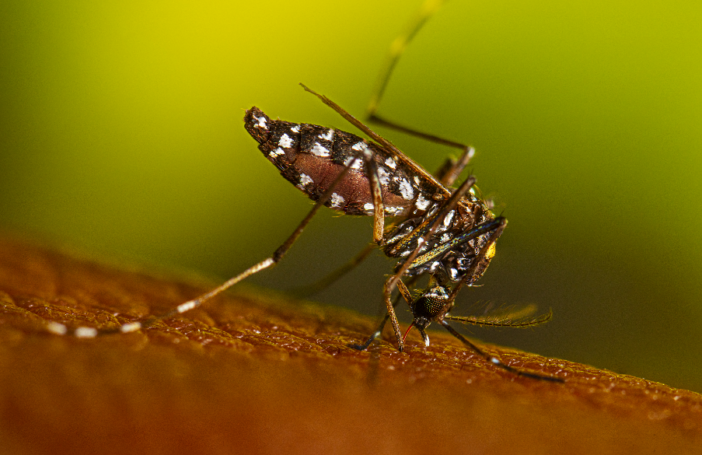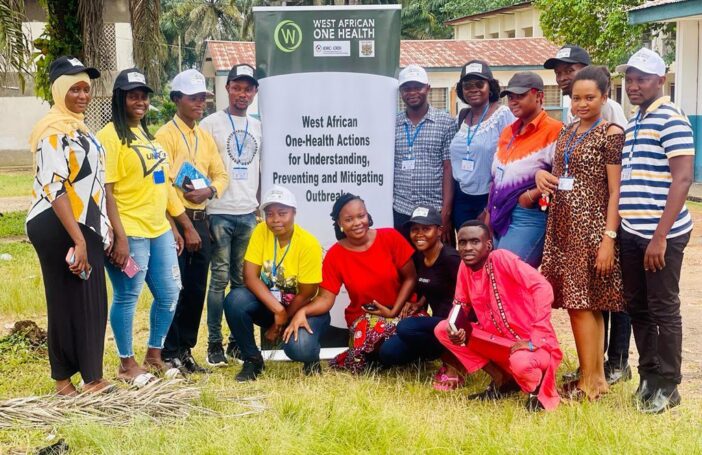What will COVID-19 mean for the Pacific? Right now, the effects of the virus are poised on the edge of sweeping into the region. It’s difficult to predict exactly what will come. But it’s helpful to break the overall issue into constituent parts and examine what each means.
The first constituent part is the disease itself. Is COVID-19 already present? Is it on its way? Is it spreading? How vulnerable are people in the Pacific to serious illness if they catch the virus?
Here there is some good news. Although COVID-19 has infected a non-trivial number of people in French Polynesia, Guam, and New Caledonia, these are countries and territories with strong ties to metropolitan powers, and fairly weak travel links elsewhere. Only two other countries have reported cases: Fiji, with 5; and PNG, with 1. (Data as of 28 March 2020; see data and source information here; for updated data, SPC has a useful COVID-19 page here.) Most Pacific countries have now placed restrictions on incoming travel. With luck, these restrictions will prevent imported cases.
Few of the restrictions are perfect though. (My collated list of them is here.) Citizens are often allowed to return home, which is fair, but as we’re learning in New Zealand, citizens are as likely to be vectors as anyone else. And, as Michael Kabuni points out in his lucid analysis of PNG, some Pacific countries have porous borders. Then there are logging and mining companies, which seem perennially able to flout the law in places like Solomon Islands. Will restrictions stop their movement?
We also don’t know how many people in Pacific countries already have the virus, but are asymptomatic or have few symptoms. Assuming adequate testing, we’ll learn this soon enough. Whether testing will be adequate is another question. The timeliness of testing is also a problem for countries like Solomon Islands that have had to send tests to Australia for analysis. Even without testing, we will know whether the virus is present within a few weeks, as serious symptoms arise. By then though, it will be too late.
Even with testing, it is unclear if COVID-19 will be contained if any country’s outbreak gets beyond a handful of quickly identified cases. Social distancing is needed for this. In many Pacific countries distancing is virtually impossible in high-density urban areas, while in rural regions people endlessly flow from house to house, and village to village. Compared to the lonely suburbs where I grew up, there’s much to be said for such sociability, but it’s not good for isolation.
It might be possible to restrict the virus geographically. In PNG there are now bans on travel between provinces. It remains to be seen how well they work though. (Bryant Allen has some sobering thoughts based on past epidemics here.) Some smaller countries also have PNG-like restrictions on internal travel. In these countries, where it’s hard to get from island to island absent a plane or ferry, controls presumably have a better chance of success. At the other end of the spectrum, in Solomon Islands people are currently flocking out of the capital back to their provinces of origin. This is understandable, but if COVID-19 is already present, the flood will spread the virus.
Medically, if the pandemic does take hold in Pacific countries, much will depend on how often people with COVID-19 develop severe respiratory complications. In other countries, complications have been worse among people over 70. Pacific countries may be lucky in this sense: the elderly share of the population in most countries is low. Young populations don’t guarantee safety though. Life is hard in the poorest parts of the Pacific, and this may affect immune systems as much as age. Non-communicable diseases are also a major issue in many Pacific countries, which increases risk. (Data on age and prevalence of these issues is here.)
The second constituent part is health systems. Will they cope if the virus spreads significantly in any Pacific country?
In countries like PNG and Solomon Islands, the simple answer to this question is that the health service is in no state to respond. There are many problems, including an acute shortage of intensive care beds. This will likely lead to increased mortality rates. The situation is better in countries like Fiji. But still not so good as to be fit for a major epidemic. It’s unlikely intensive care capacity can be rectified in a hurry. Other issues might be though. Lack of quarantine in hospitals, poor general hygiene and insufficient personal protective equipment for staff are problems in places. Hopefully, they can be swiftly addressed.
The third constituent part is economic ramifications. Even countries that are spared COVID-19 will feel its economic impacts. Tourism will be hard hit, and will almost certainly be one of the last sectors to recover from a global downturn. Three Pacific countries – Palau, Vanuatu, Fiji – are among the world’s 20 most tourism-dependent economies. Nine Pacific countries are more dependent on tourism than New Zealand.
Beyond tourism, most Pacific countries are thoroughly embedded in the global economy. Although the World Bank lacks data for PNG and Fiji, in all the Pacific countries that it does have data for, imports and exports are a larger share of GDP than in Australia and New Zealand. Imports, in particular, are a very large share of GDP in most Pacific countries. Slowing trade, not to mention potential disruptions to trade routes, will hurt most Pacific economies. (Relevant trade and tourism data are here.) Some of the hurt will be cushioned by remittances, but remittances themselves will almost certainly be reduced owing to economic circumstances in countries like New Zealand. Some economic consequences will also be cushioned by community social safety nets, and by people’s ability to grow their own food. But this shouldn’t be overstated. The ability of urban dwellers to grow food will be limited, and they won’t be able to buy local produce at markets if they don’t have cash. Additional food takes time to grow too. And urban residents returning to rural homes may place pressures on available land.
Domestically, lockdown measures, such as those in Tonga and Kiribati will add to economic harms. In my view the moves are justified on precautionary grounds but, regardless, they will have an economic impact.
An economic crunch will reduce Pacific governments’ revenues. This either means more debt, already a problem in some Pacific countries, or less spending. Debt can rise, but only up to a point. The consequences of spending cuts falling on essential services are obvious. There is other less-essential government spending that could be cut – Constituency Development Funds in Solomon Islands, for example – but even this spending likely serves as a safety net of sorts. An inefficient one, but still not a good target for cuts in a crisis.
The final constituent part is conflict. Prolonged, elevated urban unemployment, or large numbers of people leaving cities, returning to already tense rural areas could spark this. I think this concern is less likely than the others I’ve discussed. Many Pacific countries have underappreciated means of managing tension. Also, if the other issues are addressed, conflict will be less likely. Nevertheless, there is a risk.
Combined, these constituent parts add up to a giant problem. The Pacific isn’t going into this crisis alone though. Australia, New Zealand, China and other aid donors are already trying to help. In my next post I will offer advice on what they can do.
This post is part of the #COVID-19 and the Pacific series.





Many thanks for this thoughtful and comprehensive analysis Terence.
I’d like to propose a few other issues for consideration, but first, I couldn’t agree more with your cautionary approach towards the ‘subsistence safety net’. The presumption that people in the ever-growing urban areas of the Pacific can simply return to practising subsistence agriculture in their ‘home’ villages has never been more problematic. As you rightly note, there is already pressure on subsistence agriculture and other forms of village land use in many places; and a sudden influx of people from urban areas could create or exacerbate tensions over land and access to natural resources. This will vary significantly from place to place.
As for additional issues to think about in relation to the possible impact of the pandemic in the region, the first could be broadly characterised as socio-cultural responses and interpretations. There is a growing body of research exploring how the impacts of so-called ‘natural’ disasters in the Pacific – such as cyclone Winston in Fiji, the earthquake in PNG’s Hela Province in early 2018, and sea level rise – have been shaped by place-based social and cultural factors, often with very significant implications (and not necessarily negative ones).
Another case in point is the resurgence in witchcraft and sorcery-related violence in parts of PNG. One could only imagine that if the pandemic takes hold in these areas, especially if there are fatalities, there would likely be an intensification in this sort of violence.
Finally, I think it’s critical that we don’t forget that over the 12 or 18 months (or longer) that the pandemic will potentially afflict the Pacific, the region will continue to face its ‘normal’ raft of vulnerabilities. While we’re almost out of the South Pacific’s cyclone season, it’s likely that another one will come and go before the pandemic does (plus we’re entering the cyclone season for the North Pacific); and there is alway the possibility of an El Nino induced drought (and, in the case of the PNG Highlands, frost) event. In the spirit of hoping for the best but planning for the worse, we should countenance the possibility of significant ‘natural’ disasters as part of the COVID-19 scenarios that are being discussed.
Thanks again Terence!
Thank you Matt,
That’s a great comment. I really appreciate your additional insights.
The points about culture and the “normal raft of vulnerabilities” are very well made.
Thanks again, and I hope all is well with you.
Terence
This is a good piece Terence. It’s good to see Solomon Islands using CDFs to move people (hopefully there’s no infected persons). In PNG, provincial governments were asked to develop plans on how to prevent/contain COVID-19. MPs are already allocating funds from CDFs to equip their provinces. During the drought some MPs politicized their CDFs in certain parts of PNG, giving funds to their supporters/voters. Hope that is not repeated. https://devpolicy.org/politicising-drought-relief-in-papua-new-guinea-20160118/
Apart from the risk posed by COVID-19, and poor health infrastructure, is the concerns over management of limited resources to fight COVID. PNG has requested K800 million from multilateral organizations. There may be greater accountability with these funds, with personnel from WHO, WB, ADB, IMF working together with the government. It may also set a template on how to work together in times of crisis. Crisis response in PNG has always been accompanied by accusations of poor mismanagement of limited resources.
On a lighter note, it’s been fun reading about few expatriates sneaking into PNG on yachts for safety 😊.
Thanks Michael,
Great comment. I agree – I hope CDF/DSIP funding isn’t used politically. As you say it will be very interesting to see how the international community’s response unfolds.
Thanks for letting me know about the expats on yachts.
I hope all’s good.
Terence
An excellent article. Thanks Terence.
PNG’s borders are perhaps some of the more immediately concerning areas, especially that with Indonesia. PNG’s National newspaper is doing some good reporting there: https://www.thenational.com.pg/security-at-borders%E2%80%89stepped-up%E2%80%89official/ and most recently https://www.thenational.com.pg/9-quarantined-after-crossing-border/. There are potential concerns for the disease itself, and using your formulation, economic and conflict risks there.
Thank you James C,
I really appreciate the links and the comments. You raise a great point with the conflict risk too.
Thanks again.
Terence
Terence thanks for a thoughtful piece, as ever. While the immediate concern of everyone with an interest in the Pacific will of course be with the direct human impact, and how that can best be minimised, could I suggest a fifth lens through which we might consider the longer-term impact of coronavirus in the Pacific, that is its impact on governance?
Clearly, it’s early days yet but we are seeing some ways in which responses to the pandemic are driving innovation (https://www.rnz.co.nz/international/pacific-news/412992/vanuatu-livestreams-official-vote-count). This may be a temporary fix but it’s possible that the pandemic response might turbocharge the development of e-government in some parts of the Pacific. On the other side of the ledger, concerns have been expressed (https://www.abc.net.au/radio-australia/programs/pacificbeat/pac-countries-lockdown-but-censorship-concerns-in-vanuatu/12095518) about the scope of Vanuatu’s State of Emergency and in particular its impact on media freedom.
In Solomon Islands you rightly note the role played by constituency development funds as a form of social safety net, however rough and ready. Solomon Islands media have reported that the government there has recently released funds to MPs to assist with the repatriation of Solomon Islanders from Honiara to their respective home provinces. There is precedent for this sort of ad hoc allocation in previous natural disasters in Solomon Islands. Bearing in mind that it’s still very early days, so far the response to COVID-19 in Solomons would appear to have further entrenched the role of Members of Parliament as channels for the direct delivery of services to citizens.
Thanks James B, great comment.
Classic theory on state formation has it that countries sometimes improve governance, and move away from clientelism, when faced by external threats. Covid-19 seems like quite an external threat. And all around the Pacific we are seeing leaders take difficult decisions with a view to national welfare.
That said, as you say, part of the response in Solomons seems to be use of CDF’s. I think we both agree this may actually be useful in many ways. But it doesn’t seem like a move away from clientelism.
Then there’s fairly recent example of PNG in the drought, which isn’t encouraging.
But, who knows, this is unprecedented, and unpredictable.
Thanks again for a great comment.
While the CDF is being used in Solomon Islands, I do agree with Terence that Clientelism is being practised still, as evidenced by charters being made for close supporters only and not for all constituents.
Thanks Casper, Good to hear from you.
That’s a very interesting comment about supporters being prioritised in charters. Thank you for sharing it.
I hope all’s well with you.
Terence
Great blog Terence. On the use of CDFs in Solomons – and referring to James’ reference to precedent – in 2015, in the wake of a number of cyclones, disaster relief funds were allocated directly to constituencies. The practice was criticized by the Public Accounts Committee at the time: “[t]he committee was very concerned about the decision to channel funds directly to the constituencies as it could lead to politicization of essential assistance and leave people vulnerable…”. In 2016, the PAC recommended the establishment of a “proper legal frame” for the “administration, control and management of the Disaster Relief Fund.” (These quotes are from PAC reports.) Of course, nothing happened. This is one of the few times where CDFs really shine as a means of quickly getting cash out the door to where it is most needed – in a fashion vastly quicker than the traditional bureaucracy could do I daresay.
Thanks Dan good comment,
To sum up my take after reading yours and others’ comments.
CDFs are almost certainly going to be part of the government’s response in Solomons. (Indeed, as Casper suggests, they already are in a transport sense.)
There are benefits to this: it’s quick, the money actual reaches rural areas, and MPs have a political incentive for it to work, in a way.
There are drawbacks too, though: CDF spending has been targeted to MPs’ supporters in the past in some/most electorates; also, disbursal of CDF funds to MPs seems to sometimes be politicised (harder at times for the opposition to get).
Then there’s an unknown: quite a lot of CDF money seems to ‘leak’ on route from MP to people at the grassroots. Hopefully, this is less of an issue in a crisis.
Thanks again for a great comment.
Terence
Quick comment footnotes:
I benefited from several people’s advice in writing this. Thank you!
After submitting the post, I was sent this article from the Guardian about the shortage of PPE in PNG; it is very worrying.
The blog represents my estimate of likely issues. I’ve erred on the side of pessimism in the past (my take on the Global Financial Crisis in the region was also bleak). Given this, here’s my take on the best case scenario: the virus is kept out, meaning countries are spared the medical issues. Economic problems are inevitable, but perhaps they might be cushioned by a quickly recovered China, and village social safety nets/subsistence agriculture. Maybe a vaccine comes sooner rather than later. Even then, there will be a need for external assistance: tourism will be down for a long time, and not everyone has access to those safety nets. That’s the best case scenario, not the most likely.